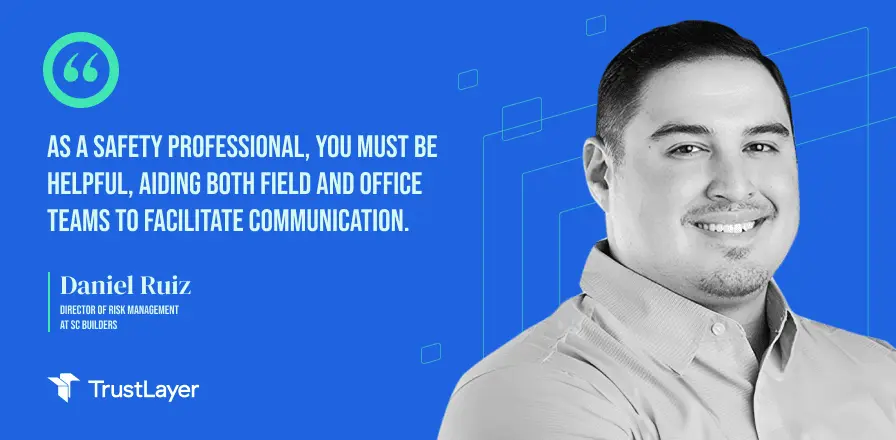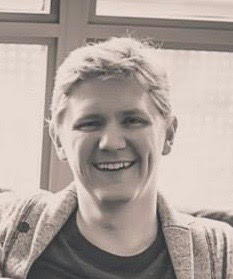Safety Versus Risk Management with Daniel Ruiz of SC Builders

On the latest episode of Risk Management: Brick by Brick, Jason Reichl is joined by Daniel Ruiz, the Director of Risk Management at SC Builders, a mid-sized commercial general contractor.
In this episode, Jason and Daniel explore risk management and safety in construction. They examine whether risk management and safety work is really the same thing, how to balance safety and project timelines, and consider the importance of managing subcontractors from a safety perspective.
To find out how TrustLayer manages risk so that people can build the physical world around us, head to TrustLayer.io.
Why Dedicated Safety Resources Matter
Daniel stresses the importance of having dedicated resources such as regular safety meetings and pre-task planning. He says that there’s no point telling your team that they need to stay safe without also ensuring there are processes in place that help them do that. Daniel says that safety measures shouldn’t be a box-ticking activity, but an agreed-upon set of procedures that are implemented properly.
Although some believe this approach is needlessly bureaucratic and can slow work down, Daniel believes it’s possible to strike a happy medium between trusting a construction team to work in the way that they want to work and staying safe. The key to all of this is communication:
“I think the other thing that’s important is that as a safety professional, you have to be the way you present yourself in the field is, you know, “I’m here to help you guys. I’m not here to get people in trouble.” We have that reputation of just writing people up. You have to quell that right off the bat and just show that “Hey, I’m just a person here, just like you. And I’m actually here to make sure that you know anything that you want to voice as a concern with how things are going that I can communicate upwards.”
Qualities of Good Leadership in Construction
Daniel outlines some key qualities that he believes all good leaders in construction possess. Firstly, he says it’s important to lead by example, criticizing the ethos of “do as I say, not as I do”. Why should employees follow your rules, if you don’t follow them yourself? Daniel also values the qualities of honesty, integrity, and good communication, saying
“I think it helps to be a good communicator. I think you want to make sure that you’re easy to talk to when people need to come talk to you.”
Being a good leader in construction is also about having a coaching mindset, and being willing to develop other people—Daniel notes that this is something he learned early on. The more you develop other people, the more they will be able to help you. Daniel says:
“I would never want to be the person who just stacks work upon work upon work upon themselves. I like to delegate.”
Daniel likes people to always be learning because it keeps them engaged. People don’t want to do the same thing every day. The more they learn, the more they will develop, the better they will be able to do their job. This is especially important in a knowledge-based industry such as construction. Being willing to step in and learn something outside of your current skill set goes a long way!
To find out more about how risk management is put into practice, tune in to this episode of Risk Management: Brick by Brick.
Apple: https://apple.co/3UtVLzr
Spotify: https://spoti.fi/4aWnFcm
Podcast Host: Jason Reichl
Executive Producer: Don Halliwell

